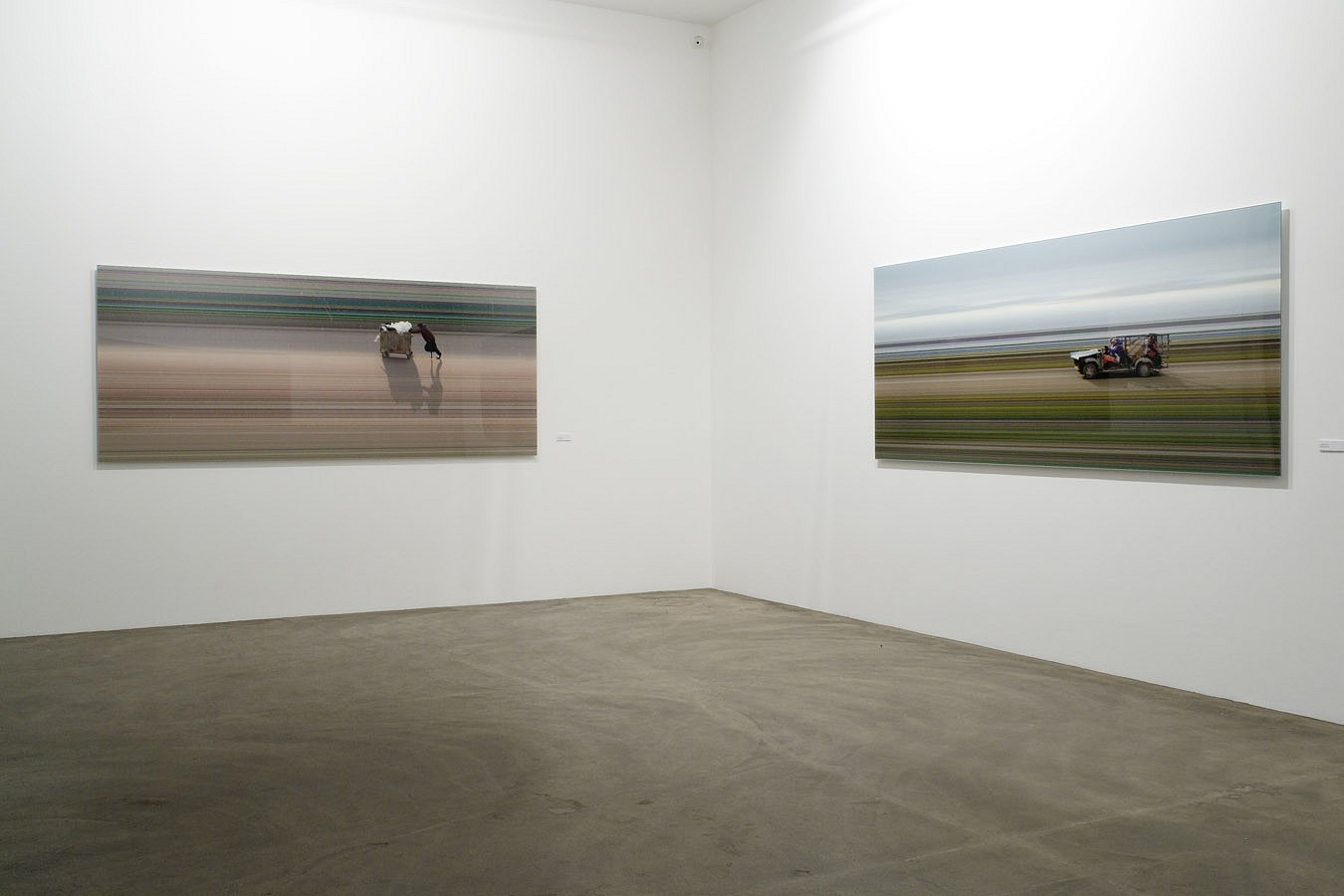
SWEPT AWAY
Oct 25, 2008 – Jan 10, 2009
Galerie Deschler, Berlin DE
In his large-format photographs, the American artist Jay Mark Johnson (born 1955) presents sequences of movement. In a process developed by the artist himself, he employs a specially modified camera, which records but a narrow vertical plane in front of the camera lens. While the images retain a spatial dimension in their vertical axis, the horizontal axis is dedicated to a depiction of the passage of time. The camera thus produces an image flowing evenly from left to right. Although the picture is created digitally, it is not digitally manipulated. Rather it is a true indexical recording of a concrete movement. Johnson’s photographs become a series of “action paintings” revealing the progressive patterns of the gestures and movements themselves. The hybrid combination of spatial and temporal dimensions creates images that not only pique our curiosity but also question our normal mechanisms of perception. Although Johnson’s images allude to art historical precursors – above all the chronophotographic studies of movement of the late 19th century (Eadweard Muybridge, Étienne Jules Marey, Albert Londe et al.), as well as the works of Italian Futurism – he goes beyond these in methodology and sheer visual impact.
In his new exhibition “Swept Away” Johnson focuses on images created in Belgrade in February 2008. The images were taken in freezing conditions with overcast winter skies from roadsides, from scenic overlooks and within a few local flea markets and junk markets, and depict sequences of cars or trams as well as the lone figures of junk or scrap metal collectors and the like. According to Johnson, the title of the show was inspired by the socially critical film by Lina Wertmüller, which examines the gradual reversal of the hierarchical positions between a rich northern Italian lady and a simple southern Italian deck hand when they are stranded on an uninhabited island. But the title is much more multifaceted: it also refers to the obliterated landscapes behind the vehicles and figures, an image maybe of the destruction of nature by the relentless encroachment of industry, as well as to the desolate social isolation of the depicted figures, who move on the fringes of society and are commonly excluded from the collective awareness. Lastly it can also be read, particularly in view of the inclusion of the element of time in Johnson’s images, as a compelling visual reflection on the nature of time itself as a destructive maelstrom that washes away all that is but transient.